In the system shown in the figure AB and CD are identical elastic cords having force constant K. The string connected to the block of mass M is inextensible and massless. The pulley is also massless. Initially, the cords are just taut. The end D of the cord CD is gradually moved up. Find the vertical displacement of the end D by the time the block leaves the ground.
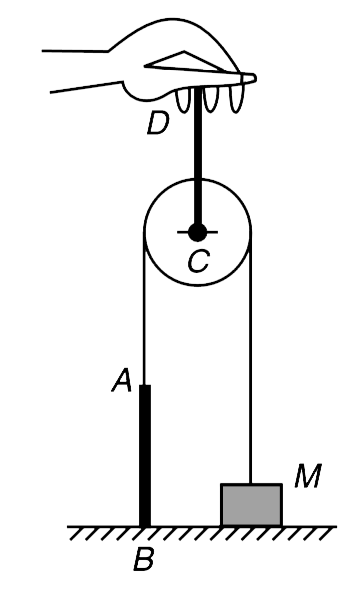
The correct Answer is:5Mg2K
Step by step video, text & image solution for In the system shown in the figure AB and CD are identical elastic cords having force constant K. The string connected to the block of mass M is inextensible and massless. The pulley is also massless. Initially, the cords are just taut. The end D of the cord CD is gradually moved up. Find the vertical displacement of the end D by the time the block leaves the ground. by Physics experts to help you in doubts & scoring excellent marks in Class 11 exams.
Topper's Solved these Questions
Similar Questions
A particle is acted upon by a force for 1 second whose X component remains constant at Fx=30N but y and z components vary with time as shown in the graph. Calculate the magnitude of change in momentum of the particle in 1 s. What angle does the change in momentum (Δ→P) make with X axis ?
 05:14View Solution
05:14View SolutionThe pulley of radius R can rotate freely about its axle as shown in the figure. A thread is tightly wrapped around the pulley and its free end carries a block of mass m. When the block is at a height h above the ground the system is released (i.e., the pulley is made free to rotate & the block is allowed to fall) and at the same instant the axle is moved up keeping it horizontal all the time. When the block hits the floor the axle has gone up by a distance 2h. Find the angle by which the pulley must have rotated by this time.
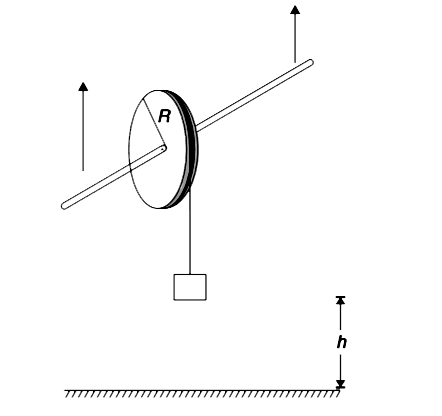 02:49View Solution
02:49View SolutionUniform rod AB is hinged at end A in horizontal position as shown in the figure. The other end is connected to a block through a massless string as shown. The pulley is smooth and massless. Mass of block and rod is same and is equal to m Then acceleration of block just after release from this position is
01:27View SolutionA system of two blocks A and B are connected by an inextensible massless string as shown in Fig. The pulley is massless and frictionless. Initially, the system is at rest. A bullet of mass m moving with a velocity u as shown hits block If and gets embedded into it. The impulse imparted by tension force to the block of mass 3m is
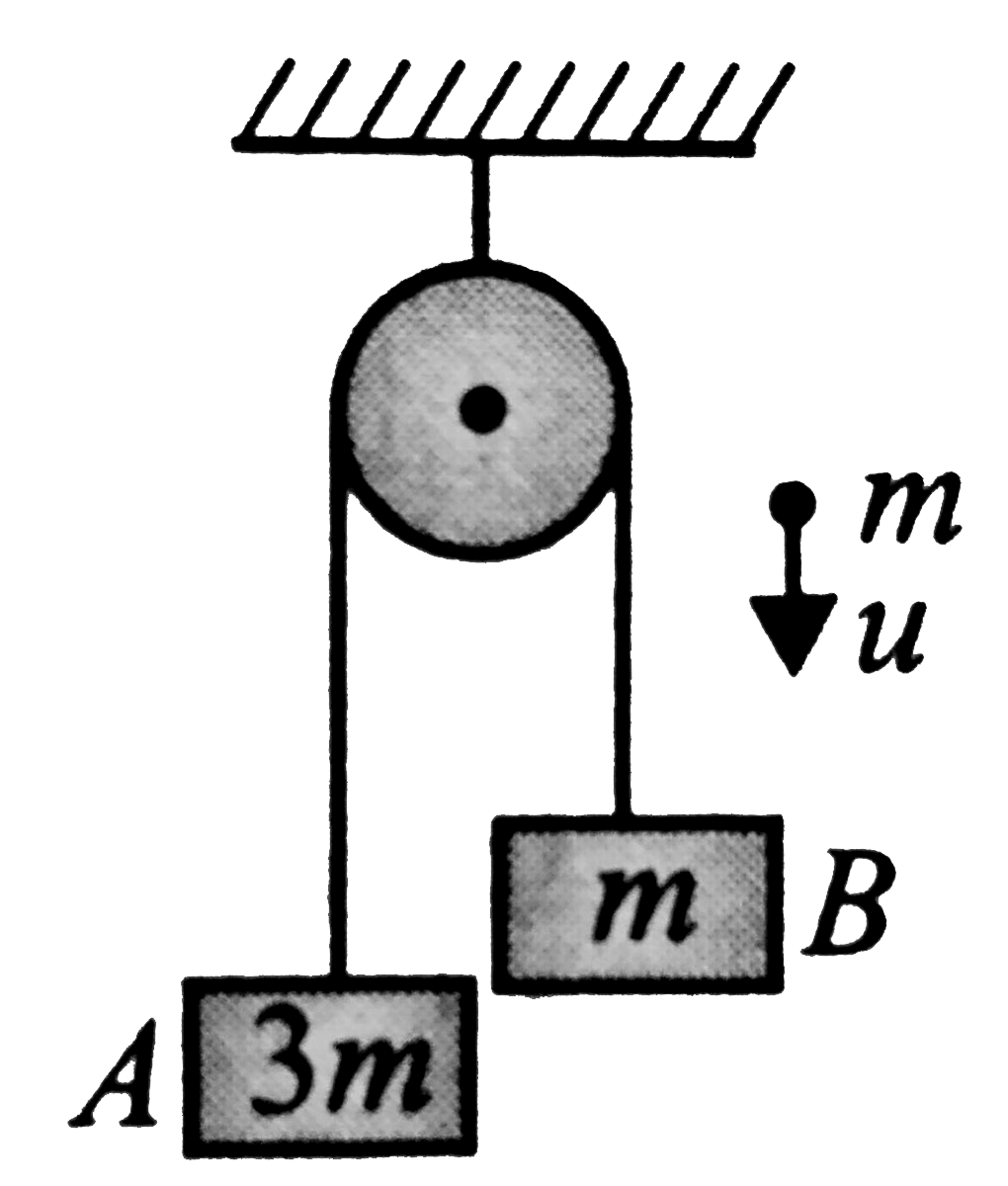 05:47View Solution
05:47View SolutionIn the shown mass pulley system, pulleys and string are massless. The one end of the string is pulleed by the force F=2mg . The acceleration of the block will be
05:16View SolutionAB is a vertically suspended elastic cord of negligible mass and length L. Its force constant is k=4mgL. There is a massless platform attached to the lower end of the cord. A monkey of mass m starts from top end A and slides down the cord with a uniform acceleration of g2 . Just before landing on the platform, the monkey loses grip on the cord. After landing on the platform the monkey stays on it. Calculate the maximum extension in the elastic cord.
 01:23View Solution
01:23View SolutionUniform rod AB is hinged at end A in horizontal position as shown in the figure the other end is connected to a block through a massless string m as shown the pulley is smooth and massless masses of block and rod is same and is equal to m then acceleration of block just after release from this position is
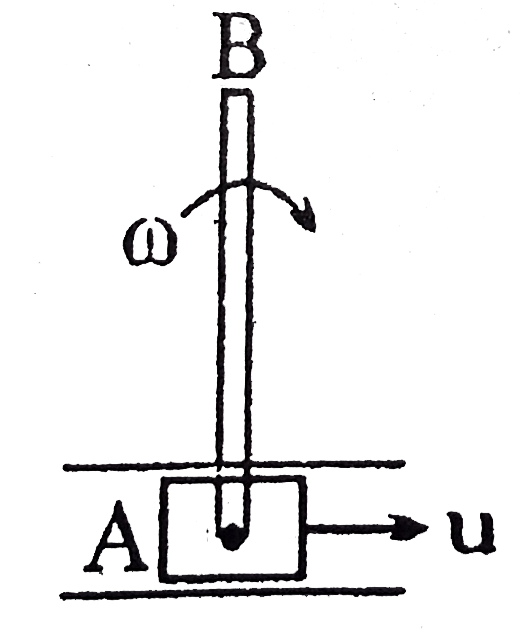 01:26View Solution
01:26View SolutionA cord is used to lower vertically a block of mass M through a distance d at a constant acceleration g/4. Find the work done by the cord on the block.
06:02View SolutionIn the shown mass pulley system, pulleys and string are massless. The one end of the string is pulled by the force F = mg. The acceleration of the block will be :
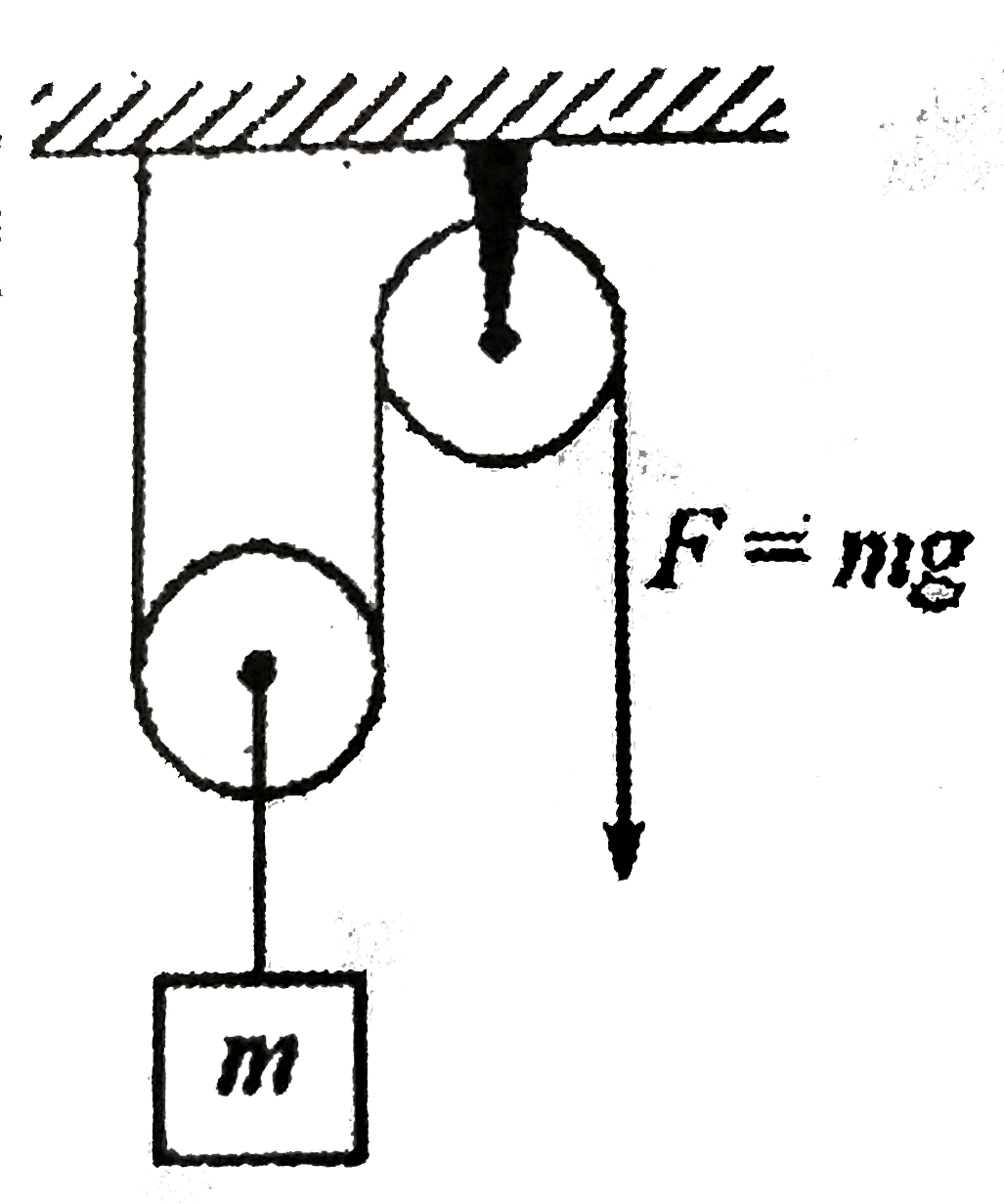 11:51View Solution
11:51View SolutionAn elastic cord of constant K and length L is hung from point A having a massless lock at the other end. A smooth ring of mass M falls from point A , the maximum elongation of cord is
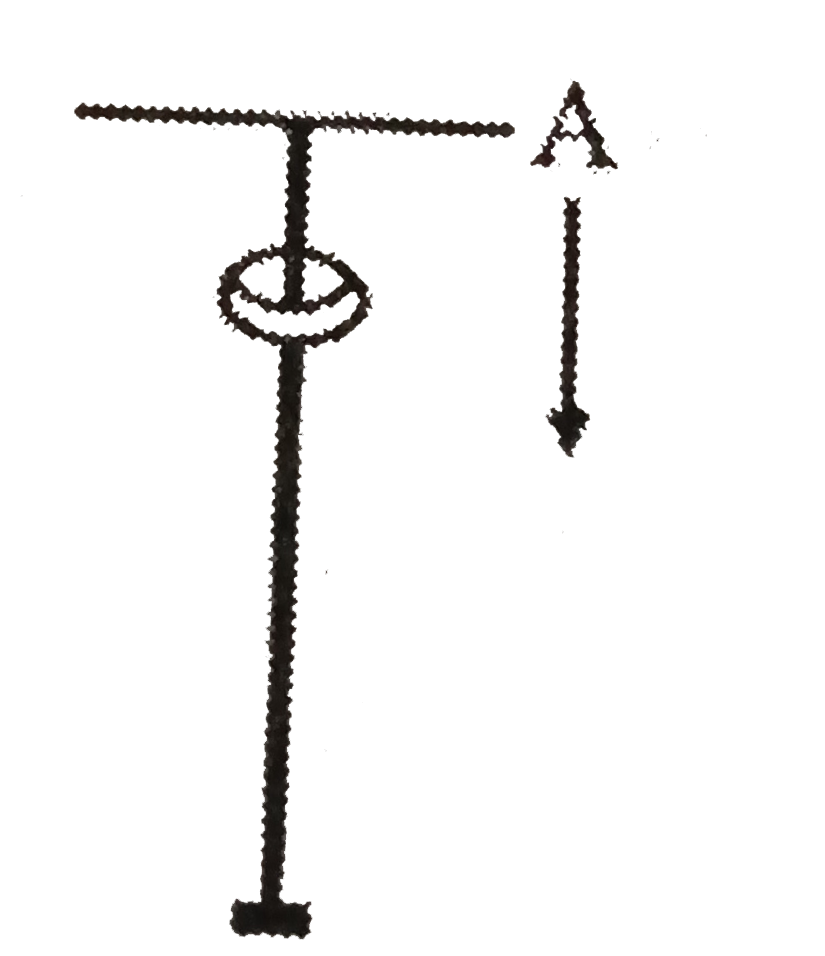 05:03View Solution
05:03View SolutionA cord is wrapped on a pulley (disk) of mass M and radius R as shown in figure. To one end of the cord, a block of mass M is connected as shown and to other end in (a) a force of 2 Mg and in (b) a block of mass 2 M. Let angular acceleration of the disk in (a) and (b) is alpha_(A) and alpha_(B) respectively, then (cord is not slipping on the pulley)
View SolutionFigure 5-20 shows a block S (the sliding block) with mass M = 3.3 kg. The block is free to move along a horizontal frictionless surface and connected, by a cord that wraps over a frictionless pulley, to a second block H (the hanging block), with mass m = 2.1 kg. The cord and pulley have negligible masses compared to the blocks (they are "massless"). The hanging block H falls as the sliding block S accelerates to the right. Find (a) the acceleration of block S, (b) the acceleration of block H, and ( c ) the tension in the cord.
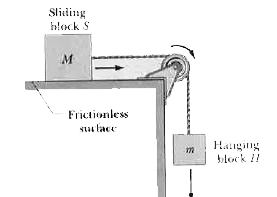
Figure 5.20 A block S of mass M is connected to a block H of mass m by a cord that wraps over a pulley.06:12View SolutionA block of mass mass suspended by a rubber cord of natural length l = (mg)/K where K is force constant of the cord. The block is lifted upward so that the cord becomes just tight and then block is released suddenly:
04:15View SolutionUniform rod AB is hinged at end A in horizontal position as shown in the figure. The other end is connected to a block through a massless string as shown. The pulley is smooth and massless. Mass of block and rod is same and is equal to m Then acceleration of block just after release from this position is
03:08View Solutionएक एकसमान छड़ AB इसके सिरे A पर किलकित है और छड़ का दूसरा सिरा एक द्रव्यमानरहित डोरी द्वारा गुटके से जुड़ा है, जैसाकि आकृति में दिखाया गया है। घिरनी चिकनी और द्रव्यमानरहित है। गुटके और छड़ के द्रव्यमान समान हैं और ये m के बराबर हैं। इस अवस्था से मुक्त होने के ठीक बाद गुटके का त्वरण है
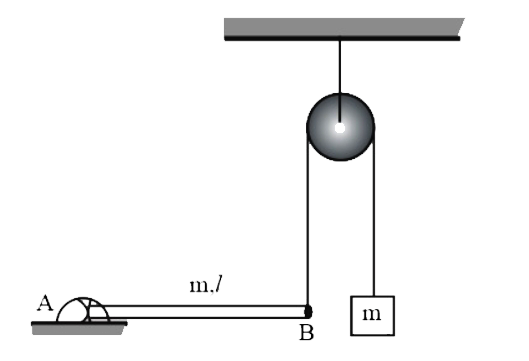 04:41View Solution
04:41View Solution

